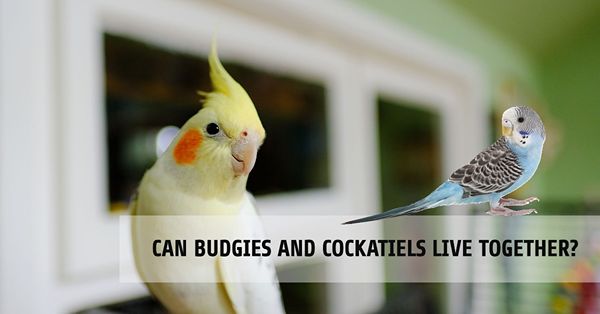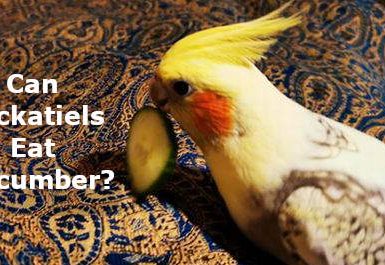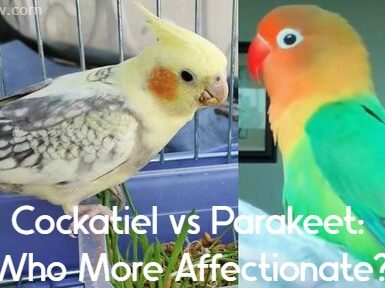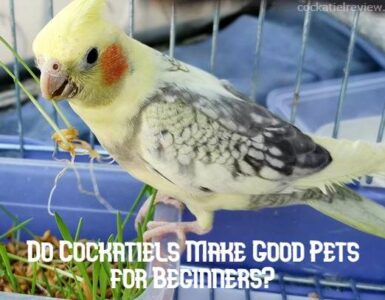
Can Budgies and Cockatiels live together in cages: comparability and recommendations
For those who prefer birds, the chapter will be interesting and very enjoyable. However, before buying a fresh and feathered companion, it is important to know the details of his care. This is essential not only for the well being of the animal, but also for his pleasure.
Corella’s parrots and Budgies are considered one of the most famous tame bird species. They have beautifully spotted feathers and a variety of temperaments. Almost everyone wonders if it is possible to keep both species in one cage. In this article we will discuss all the nuances of living together. I will describe grass parakeets and cockpools and offer tips to help you keep them comfortable.
First of all, it is good to point out that co-propagation of grass parakeets and cockspur is very possible, but requires some preparation. It is important to realize that both species have unique aspects of temperament and behavior and therefore all the nuances associated with their care and maintenance must be observed.
Why are budgies and cockatiels basically aristocrats if they can be kept together?
- Animal welfare: some bird species exist together and have no opportunity to freeze each other. This can lead to injury or even death of the animal.
- Quality of life: it is very important that birds have a comfortable environment. Living with compatible species will have a positive impact on their behavior and mind.
- Company: cockatoos and bockatoos are social beings and need the company of a mate, so they can be kept together if they are compatible.
- Space savings: if you can keep several species of birds in one cage, you will save space and be more comfortable.
In general, before buying a bird, you should learn what its structure and compatibility is with other species; you need to be careful when combining two different bird species in one cage so as not to harm the well and well-being.
Basic considerations regarding inappropriate combinations
1. different nature of sociality. Budgies are junk birds that need supporters and company. On the other hand, the cholera is the least of the comrade birds and insists on interest and contact with other birds.
2. various sizes. Budgies are smaller than cockatoos and are more likely to be angry than larger birds. Corellas may step into a wavy parrot and hurt it.
3. various daily routines. Budgies function in the morning and evening hours and nap during the day. On the other hand, Corellas are more functional during the day, preventing Budgies from resting in the direction of the sun.
4. various degrees of noise. Budgies can keep cockatoos from experiencing comfort. Additionally, it can cause stress on the birds’ rattles, which can negatively impact their well being.
What is the basis for a happy combination?
Compatibility of temperament and behavior. Budgies and cockatiels – quite functional birds, but different in character. You need to make sure they have every opportunity to coexist. Budgies are more social, more outgoing, and often make friends with each other. Choose a cockatiel with a similar temperament and they will make friends.
Cage Size and Dimensions. Budgies need fairly huge cages for flies, play, and activities; Corella’s are quite functional and have plenty of space, so more space is needed. The cage must be large enough so that it can be easily moved and enjoyed. Make sure there is enough space in the room to accommodate the cage.
Nutrition and Care. Parrots and cockatoos have different diets, so you need to ensure that they all get the right food. For example, running parrots need more seeds, while corellas need a greater variety of fruits and vegetables. You need to know a lot about each bird’s diet to assure that they get the right food. The cage must be well cared for, as dirty surfaces can cause incidents between the two birds.
How do you prepare a cage for two birds?
Step 1: Select the best cage. Choose a cage that must be at least 60x60x90 cm in size for the comfort of the grass parakeet and the cockpoll.
Step 2: Build a comfortable nest. Waved parrots and cockatoos like to rest in their nests. Prepare natural materials such as wood and straw in advance.
Stage 3: Purchase a double feeder. Feed bins are considered one of the more important qualities when keeping birds. Buy one double feeder for Budgies and another for cocking.
Step 4: Place toys in the cage. Wrobel parrots and corellas need toys to keep them entertained. Purchase swings, ladders, mirrors, and other toys for them to play with and enjoy.
Step 5: Prepare the swimming area. Winged parrots and cockatoos love to swim. Prepare their swimming area with water and place them in their cage once a week.
Stage 6: Place the cage in a comfortable space. Place the cage in a quiet, comfortable space where the bird is protected against other family animals and drafts.
Step 7: Keep the cage clean. Clean the cage regularly and replace the printed circuit plates and racks so the cage is clean and tidy. Continue to change the water and feed the birds twice a day.
Set aside space for entertainment and nutrition
For Budgies:
– Place feed and saucer in bottom of cage.
– Place swings, ladders, and toys at the top of the cage so the bird can enjoy itself and gain physiological energy.
– Nest at the bottom of the cage to enjoy and sleep.
The parrots want to chew and lick everything in their way. That is why it is advisable to have only harmless toys in the cage.
For Corellas:
– Place a dish of feed and water at the bottom of the cage.
– Place sleeping sticks, ladders, and toys at the top of the cage.
– Place nests for entertainment and sleeping on top of the cage.
Corella Gnaws and licks everything that gets in their way. That is why we recommend placing harmless toys in the cage.
When they are together:
- The cage should be large enough for the bird to feel comfortable.
- Place two food bowls and two water bowls in different parts of the cage so that the birds do not fight with food or drink.
- Add toys and objects with every opportunity to be attractive to both the wiggling parrot and the cholera.
Bird Watching
Observation of grass parakeets and cockatiels can occur simultaneously if they are in the same cage. Both birds are social species and therefore easier to keep together. It is important to ensure that the birds are compatible before housing them together.
To chase birds, you must create a comfortable living environment for them. The cage must be large enough. That way, every bird will have its own space to enjoy and play. Food and water and toys for contrast must be guaranteed.
By observing how the birds behave, you can determine which birds are considered dominant and observe how they treat each other. You can indicate stress or frustration when a bird screams or squeaks. It is also advisable to pay attention to the condition of the birds in the cage and their interactions with each other and their environment.
- Supervising the birds allows for this:
- Qualify their behavior and emotional state.
- Control their health and nutrition.
- Determine the dominant birds and check their relationships.
- Make sure they feel safe in the environment in which they live.
It is important to remember that by focusing on the birds, you can better understand their behavior and needs than anyone else.1 If you notice that a bird is not falling out of the game or eating, consider contacting your veterinarian or having a background check done on the bird to find the cause of the bird’s dissatisfaction Please note that the bird’s behavior may not be the same as that of the vet.
Value of Toys and Other Accessories
Toys and other accessories for fluffy parrots and cockatoos can play an important role in stimulating physiological and psychological energy. This can have positive effects on general health and behavior.
Toys, swings, rings, ladders, balls of all kinds, wheels, and mirrors are the most popular, which can help birds develop movement coordination and learn to fly and strengthen muscles.
Additionally, toys and devices can play an important role in stimulating mental development, as they can be used for memory training and problem solving.
Active devices such as feed boxes, water bins, and bathing facilities should not be forgotten to ensure that the family bird stays comfortable and prevents bad habits and behaviors.
However, one must not forget that an abundance of toys and accessories can lead to problems. All layouts of the cage should be selected and correctly arranged to provide protection and space space for the birds.
The problems associated with nest migration and competition for space
Competition for food. Waved parrots and cockatoos have every opportunity to experience competition for food, which can lead to general life challenges. To prevent stories in which one bird takes over all the action in the cage so that other birds are not kept in mind, the birds must be fed. As a result, it is advisable to ensure that there are enough food bowls in the cage to allow each bird to draw
Competition for nesting opportunities. If there are wavy parrot and cockatiel pairs in the cage, competition may arise in the nesting universe. Each pair should have its own nest and bedroom. To prevent territorial problems, both birds should be able to enter and exit their own recreational space without being blocked by the second bird.
After all of the above, a good conclusion can be drawn about the compatibility of budgies and cockatiels.
- Cage sharing is very possible, but requires specific criteria and preparation.
- Do not grow animals together if they are sick or have a stressful past.
- It is important to ensure that the cage is large enough to sit comfortably together.
- Ensure that animals do not oppose each other or interfere with each other’s freedom of movement.
- Ensuring that every animal has its own space and taking care of its well will ensure that common problems are prevented.
By keeping all these points in mind and monitoring the tips, you can assure the happy and healthy life of the wavy parrot and cockatiel together in one cage.
Quick Answers
Q: Do budgies and cockatiels have every opportunity to reside in the same cage?
ANSWER: Some owners keep them together and report winning this life together, but this is not always the case. The end result depends on the temperament of every bird. It is important to keep in mind that every individual is unique and a bird’s behavior may vary depending on skills and socialization.
Q: How do you recognize, do budgies and cockatoos have every opportunity to become friends?
ANSWER: It is of fundamental importance to monitor the behavior of all birds after introduction. If they become cocky or dominant, place them in a cage other than another cage. The best way to test compatibility is to keep the parakeets and cockatiels adjacent to each other in separate cages for a while and see how they behave.
Q: How do I prepare to share a cage with budgies and cockatoos?
Answer: Provide enough space for the birds, for example. For example, both birds will just get every opportunity to develop. Add a few toys and branches for good shelter and play area, and perhaps include some food bowls to ensure access to food and water.
Q: What should I do if a parakeet and cockatiel start fighting?
ANSWER: If hostility occurs, separate the birds immediately. Keeping them in separate cages will certainly help prevent injury or death. After a while you can attempt to reintroduce the Budgies and cockatiels, but first make sure both are tested for their wells.
Question: Which behavioral traits are needed to safely combine budgies and cockatiels?
ANSWER: Both waved parrots and cockatiels are social birds. This means they must interact with other birds. Observe their behavior to find out if they want to make a show, get to know each other, or work in your neighborhood. Careful observation and an attentive attitude can possibly make life in a shared cage for both bird species.






Add comment